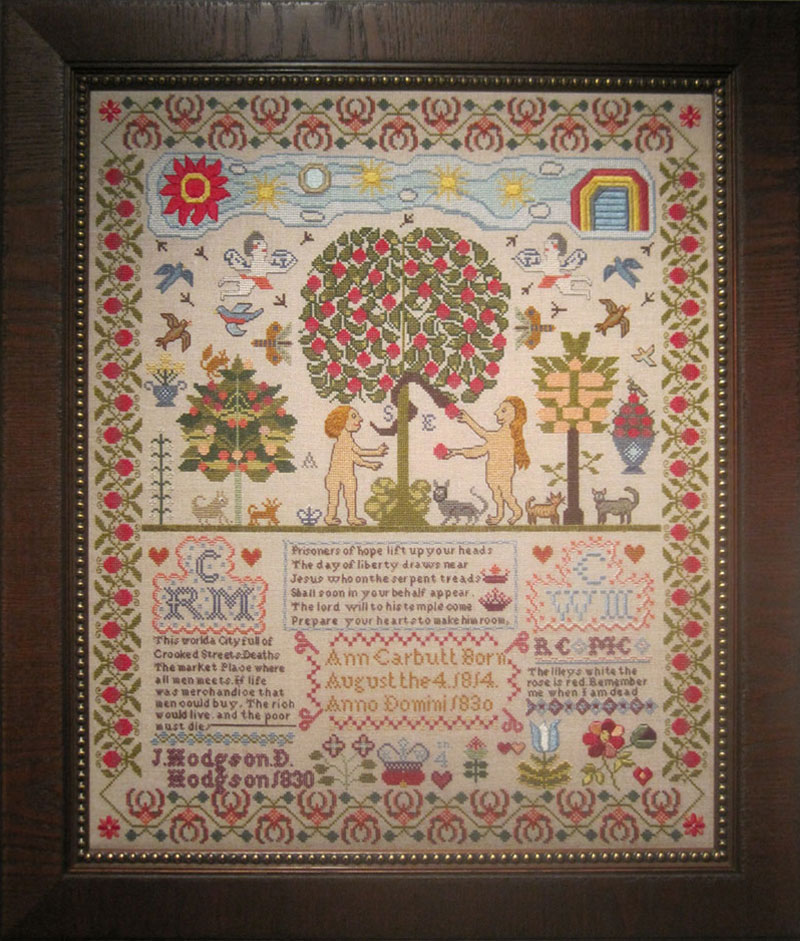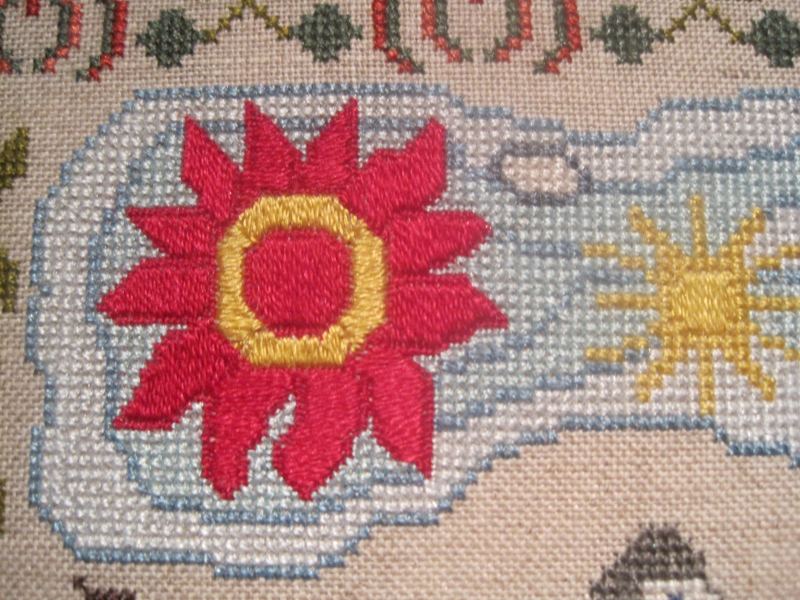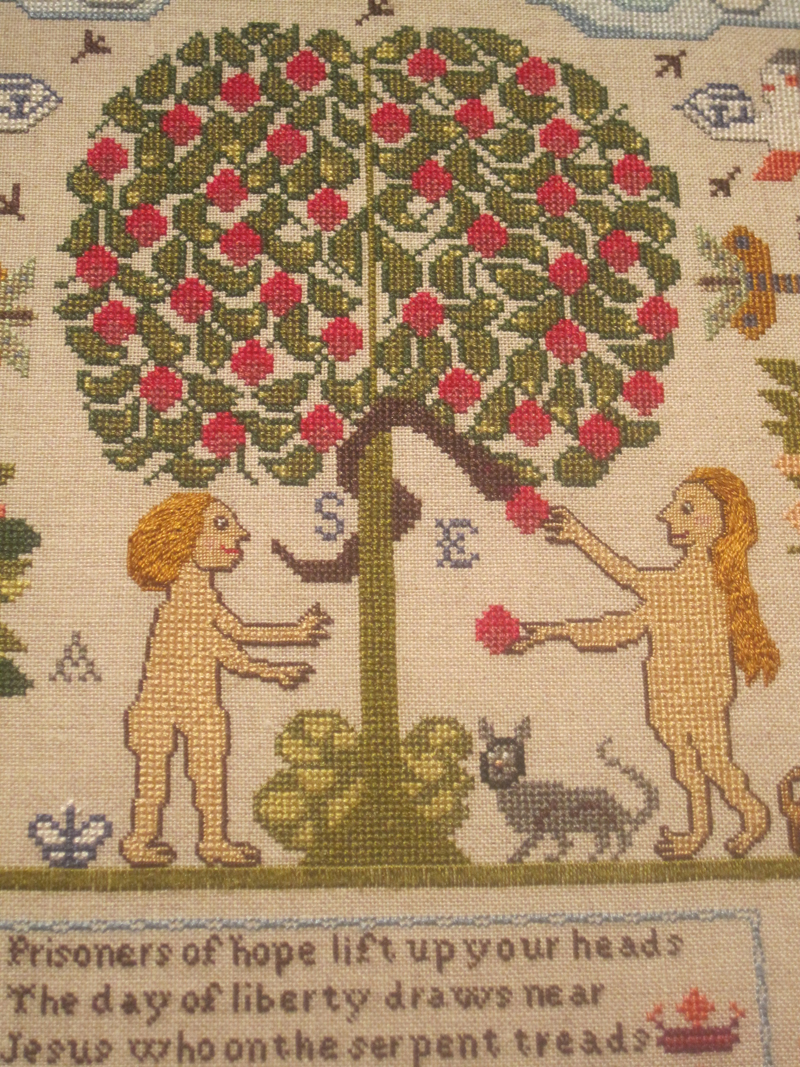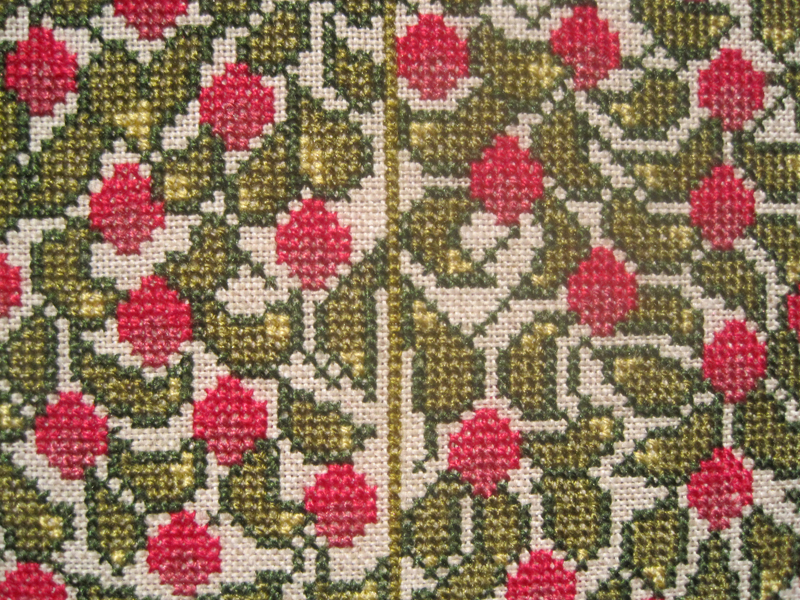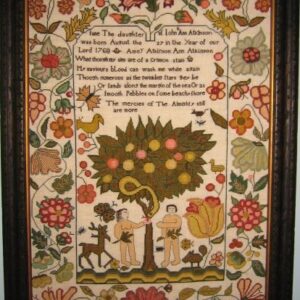Description
So many unusual and enigmatic features were left by Ann Carbutt on her sampler, made when she was sixteen years old, very likely in the West Riding of Yorkshire. The surname “Carbutt” is first found in Cheshire after the Norman Conquest. Variations of the name include “Garbutt”, “Garbit”, etc. and remain prominent in the north of England. This research was done to ascertain where Ann Carbutt might have lived. Elements of its design suggest Scotland, but more than likely she lived just over the border in Yorkshire.
The Hodgson and Carbutt names, both appearing on the sampler, also appear in the Ackworth School directories from the late 18th century through the 1830’s. While I could not uncover any documentation proving that Ann was a student there, it is possible that some in her family might have attended.
Her sampler does not exhibit any typical Quaker motifs so the names on the Ackworth School registers are probably coincidental, reflecting family names common in the region at that time. Her work is more free form, with an unusual firmament stitched across the top fifth of the sampler which includes a blood red sun, a rainbow (the first I’ve ever seen on a sampler), the moon and stars. Most fascinating to me are the verses, especially the verse stitched in the lower left corner:
This world a City full of
Crooked streets. Deaths
the market place where
all men meets. If life
was merchandice that
men could buy, the rich
would live, and the poor
must die
James Handley of Nottinghamshire (died 11 March 1694) supposedly wrote this verse for his headstone; however an earlier example exists at Elgin Cathedral dated 1687. The origin of the verse is probably a composite (ref. Frederick Burgess in his book “English Churchyard Memorials”). The first two lines derive from the last stanza of an old ballad titled “Death and the Lady” first printed on a broadside distributed around 1681.
The verse at the center of the sampler comes from a hymn written by Charles Wesley (1707-1788):
Prisoners of hope lift up your heads
The day of liberty draws near
Jesus who on the serpent treads
Shall soon in your behalf appear.
The lord will to his temple come
Prepare your hearts to make him room.
The third verse is quite succinct:
The lileys white the
rose is red. Remember
me when I am dead.
There is yet another curious thing about this sampler: the presence of the crown at the bottom center with the initials “KW” stitched inside. My speculation is that this is a reference to King William of the Netherlands, Prince of Orange, who was very popular in Britain after the Napoleonic Wars.
Stitches used in the sampler include cross stitch over one and two threads of linen, counted satin, double running, back, four sided, stem filling and eyelet. On 35 count linen the finished piece will measure approximately 15-1/2″ x 18-1/2″.
Additional information
| Format Options |
|---|

